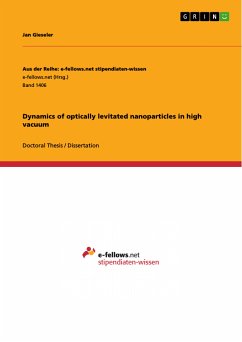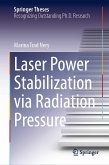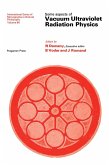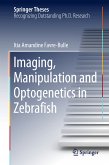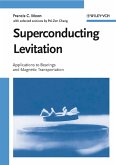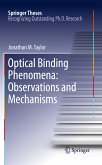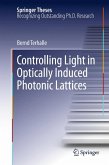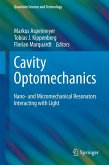Doctoral Thesis / Dissertation from the year 2014 in the subject Physics - Optics, grade: Excellent Cum Laude with Honors, , language: English, abstract: The present thesis investigates the dynamics of optically levitated particles in high vacuum. A levitated nanoparticle in high vacuum constitutes a nanomechanical resonator featuring a small mass and a ultra-high quality factor - significantly higher than that of fabricated nanomechanical resonators, which are approaching fundamental limits of dissipation. The combination of small mass and high quality factor allows for sensing of feeble exotic forces, including gravitational forces, and quantum state preparation. Investigating the quantum behavior of a nanomechanical system and testing the predictions of quantum theory on meso- to macroscopic scales, addresses one of the outstanding challenges of modern physics and will provide answers to fundamental questions on our understanding of the world. The scope of the thesis ranges from a detailed description of the experimental apparatus and proof-of-principle experiments (parametric feedback cooling) to the first observation of phenomena owing to the unique parameters of this novel optomechanical system (thermal nonlinearities). Aside from optomechanics and optical trapping, the topics covered include the dynamics of complex (nonlinear) systems and the experimental and theoretical study of fluctuation theorems, the latter playing a pivotal role in statistical physics. Optically trapped nanoparticles are just beginning to emerge as a new class of optomechanical systems. Owing to their unique mechanical properties, there is clearly a vast and untapped potential for further research. Primary examples of how levitated particles in high vacuum can impact other fields and inspire new research avenues have been the first observation of thermal nonlinearities in a mechanical oscillator and the study of fluctuation relations with a high-Q nanomechanical resonator. Based on recent progress in the field, a plethora of fundamental research opportunities and novel applications are expected to emerge as this still young field matures.
Dieser Download kann aus rechtlichen Gründen nur mit Rechnungsadresse in A, B, BG, CY, CZ, D, DK, EW, E, FIN, F, GR, HR, H, IRL, I, LT, L, LR, M, NL, PL, P, R, S, SLO, SK ausgeliefert werden.

